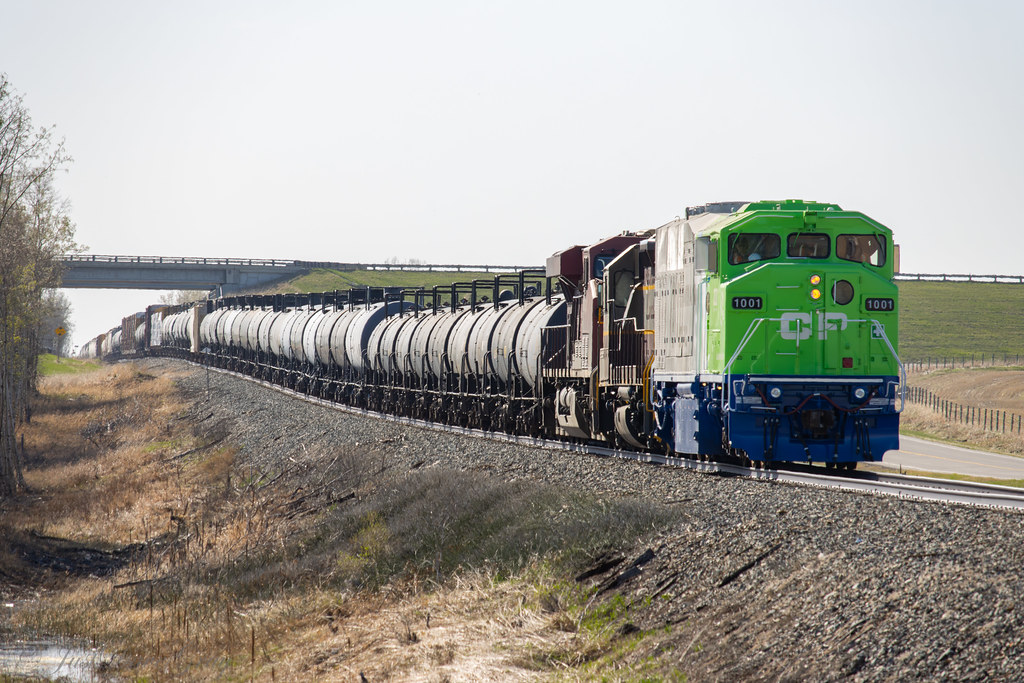#Stop CPKC
Text
Hey, so... this is really important, and I don't see many people talking about it. Community activists and leaders predict that this merger will have a detrimental impact on waterways in the Fox River Valley (which runs from about-around Milwaukee, WI to Ottawa, IL). It also connects to the Chain O' Lakes and the Illinois River. The Fox River, Illinois River, and Chain O' Lakes are all MAJOR waterways in Illinois. The second and seventh largest cities in Illinois sit along this river.
This river is the primary source of drinking water for these communities. This merger is going to increase train traffic right along the river. The volume and length of trains will increase; some have predicted ten-fold. The rail infrastructure along the river is not built to accommodate the volume, length, or weight of this new traffic, given that most of it is a commuter rail line. A derailment will affect the drinking water for about 1 million people and the ecosystem of a 202-mile-long tributary of the Illinois River.
Most of the cities along the river are segmented by the river and, thus, also the tracks. There is a public safety concern with the increased volume and length of the traffic along these rails. Some communities have first responder stations (fire stations) on one side of the tracks and the nearest hospitals on the other. The 2 mi long trains running through this area will affect response times.
The STB just approved this merger and, in a statement, told the community that *IF* their concerns about the public health, safety, and environmental effects of this merger happen to be true AFTER THE FACT, then they'll increase oversight to mitigate any issues. But by then, it's TOO DAMN LATE. That would mean something disastrous has already occurred.
17 notes
·
View notes
Video
CP 9773 With First Christmas Train, Oconomowoc,WI. DE2003 by Danial
Via Flickr:
It has been twenty years since the Canadian Pacific started running their Holiday Train, and it has become a tradition for people along the mainline to come out to donate for those that are less fortunate. This year the CPKC Holiday Train will depart Milwaukee and make stops along the way to Portage, where the train will spend the evening before moving west again. This photo is of the first Holiday, or Christmas Train back in 2003, as it stopped in Oconomowoc to take donations and entertain the crowd with a beautiful light display and live holiday music.
CP Holiday Train
CP 9773
Oconomowoc, WI.
December 2003
#holiday train#cp#canadian pacific#2003#trains#passenger train#freight train#history#oconomowoc#wisconsin
5 notes
·
View notes
Video
CPKC 419 @ Aldersyde, AB por David Gray
Por Flickr:
CPKC 419 is now stopped at Aldersyde to allow the crew to walk their train after a hose came loose about 65 cars back from the head-end.
6 notes
·
View notes
Text
CPKC Holiday Train stop in Menands NY 2023
with Virginia Vegas
Trudy
0 notes
Link
Hornbeam is a deciduous broadleaf tree native to the south of the UK, but widely planted elsewhere. It is often confused with common beech, the bark is pale grey with vertical markings, sometimes with a short, twisted trunk, which develops ridges with age. The twigs are brown-grey and slightly hairy and the leaf buds are similar to beech only shorter, and slightly curved at the tips. Mature trees can reach a height of 30m and live for more than 300 years. The name hornbeam comes from the hardness of its timber - ‘horn’ means ‘hard’ and ‘beam’ was the name for a tree in old English. C. betulus is a large deciduous tree developing a fluted grey trunk. Leaves 5-8cm long, ovate, conspicuously ribbed, turning yellow in autumn. Catkins open in spring, followed by hop-like fruiting catkins to 8cm Hornbeam is monoecious, meaning male and female catkins are found on the same tree. It is naturally found in oak woodland, and is often coppiced or pollarded. Only two species occur in Europe, the greatest number of the 30-40 species can be found in east Asia. Hornbeam is the food plant for caterpillars of a number of moth species, including the nut tree tussock. Finches and tits and small mammals eat the seeds in autumn. A tonic made from hornbeam was said to relieve tiredness and exhaustion, and its leaves were used to stop bleeding and heal wounds. Hornbeam timber is a pale creamy white with a flecked grain. It is extremely hard and strong, and so is mainly used for furniture and flooring. Traditional used for the wood included ox-yokes (a wooden beam fitted across the shoulders of an ox to enable it to pull a cart), butchers' chopping blocks and cogs for windmills and water mills. It was also coppiced and pollarded for poles. Hornbeam burns well and makes good firewood and charcoal. It makes a great addition to any park or public open space. === Scientific classification Kingdom: Plantae (unranked): Angiosperms (unranked): Eudicots (unranked): Rosids Order: Fagales Family: Betulaceae Genus: Carpinus Category Education Licence Standard YouTube Licence Category Education Licence Standard YouTube Licence
0 notes

